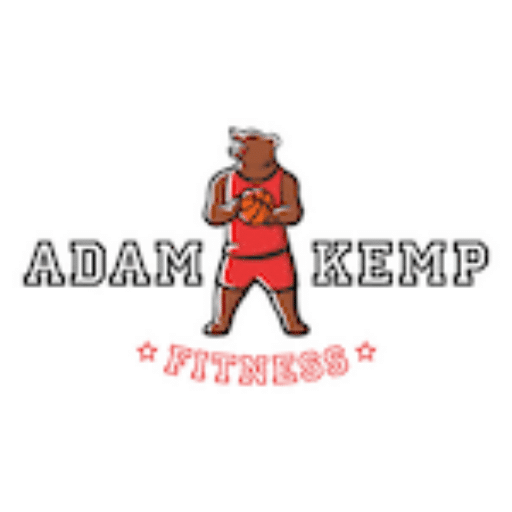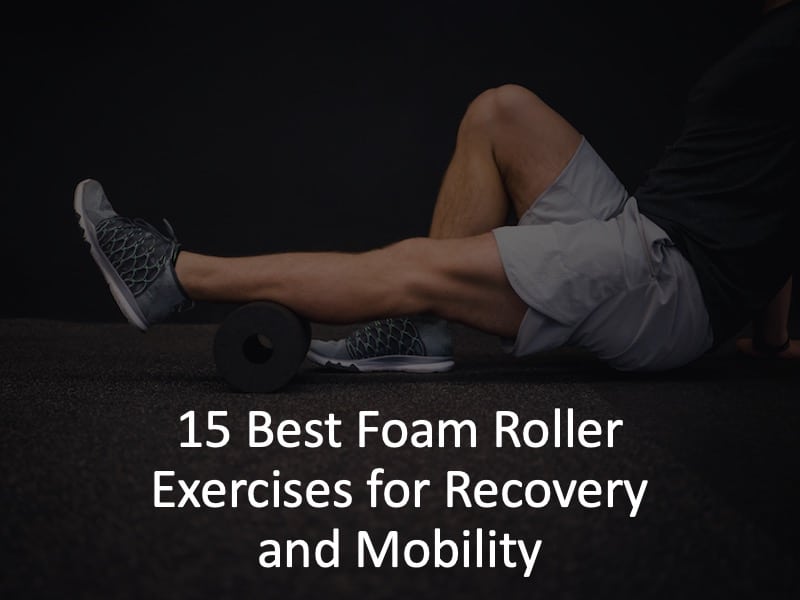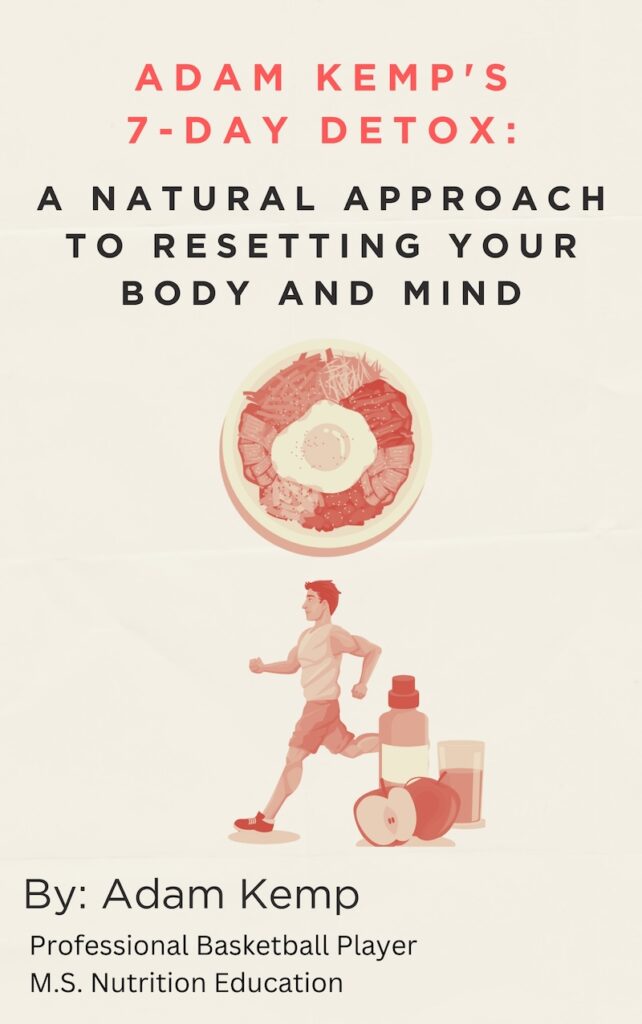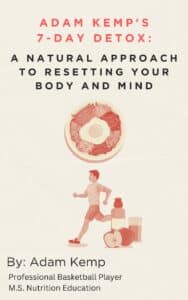15 Best Foam Roller Exercises for Recovery and Mobility
Foam rolling is a versatile tool that combines self-myofascial release (SMR) with dynamic mobility work.
It offers a host of benefits, including reducing muscle tightness, improving flexibility, enhancing mobility, and promoting recovery.
This article highlights the 15 best foam roller exercises, split between SMR techniques and mobility drills, to help you unlock your body’s full potential.
The Benefits of Foam Rolling
Foam rolling is a versatile form of self-massage therapy that offers numerous advantages for both athletes and non-athletes alike. Even better, it is one of the most affordable self-massage tools and can provide significant benefits without breaking the bank.
By applying targeted pressure to specific areas, foam rolling improves blood flow, reduces delayed-onset muscle soreness (DOMS), and alleviates tightness in both muscles and fascia, the connective tissue that surrounds and supports your muscles.
These benefits of foam rolling make it an essential tool for recovery and overall wellness.
- Additionally, foam rolling is highly effective in enhancing joint range of motion, which can improve flexibility and support better movement patterns during physical activity.
- This increased mobility not only boosts athletic performance but also reduces the likelihood of injuries by maintaining optimal muscle length and elasticity.
Foam rollers are also fantastic tools for assisting with mobility exercises, as they allow you to deepen stretches and improve positioning. For example, the Foam Roller Runner’s Lunge involves pushing a foam roller forward as you sink deeper into a hip stretch, encouraging greater hip flexibility and joint opening.
This not only enhances mobility but also helps strengthen stabilizing muscles as you work through extended ranges of motion.
Beyond its physical advantages, foam rolling promotes relaxation and stress relief, helping to release tension stored in the body and calm the mind.
By incorporating foam roller exercises into your recovery routine, you can take advantage of both the physical and mental benefits, making foam rolling a valuable practice for long-term health and performance.
Best Foam Roller Exercises for Self-Myofascial Release (SMR)
Foam rolling is a simple yet highly effective technique for releasing tension, alleviating soreness, and speeding up recovery.
By applying controlled pressure to specific muscle groups, foam rolling helps to break up tight fascia, improve blood flow, and enhance overall flexibility.
Whether you’re an athlete recovering from an intense workout or someone looking to address the aches of a sedentary lifestyle, learning how to foam roll properly can provide significant physical benefits.
These foam rolling exercises are designed to target key areas of your body, promoting muscle relaxation and boosting mobility for better performance and well-being.
1.) Quadriceps Roll
- How to Perform: Lie face down, with the foam roller beneath your thighs. Use your arms to prop yourself up and roll slowly from your hip flexors to just above your knees.
- Duration: 30–60 seconds per leg.
- Benefit: Releases tight quads, improves knee and hip mobility.
2.) Hamstring Roll
- How to Perform: Sit with your legs extended, foam roller under your hamstrings. Lift your hips slightly and roll between your glutes and the backs of your knees.
- Duration: 30–60 seconds per leg.
- Benefit: Relieves hamstring tightness and tension caused by prolonged sitting.
3.) Calf Roll
- How to Perform: Place the foam roller under your calves, supporting your weight with your hands. Cross one leg over the other for increased pressure and roll between your ankles and knees.
- Duration: 30 seconds per leg.
- Benefit: Reduces tightness from running or walking.
4.) IT Band Roll
- How to Perform: Lie on your side with the foam roller under your outer thigh. Support yourself with your forearm and opposite leg, rolling from the hip to just above the knee.
- Duration: 30 seconds per side.
- Benefit: Loosens the IT band to alleviate knee pain.
5.) Glutes and Piriformis Roll
- How to Perform: Sit on the foam roller, cross one ankle over the opposite knee, and lean toward the crossed leg. Roll back and forth on your glutes.
- Duration: 30–45 seconds per side.
- Benefit: Releases tension in the glutes and deep hip muscles.
6.) Upper Back Roll
- How to Perform: Lie on your back with the foam roller under your shoulder blades. Lift your hips into a shallow bridge and roll between your shoulders and mid-back.
- Duration: 30–60 seconds.
- Benefit: Alleviates tightness from poor posture and desk work.
7.) Lat Roll
- How to Perform: Lie on your side with the foam roller under your armpit. Roll slowly along your side body, focusing on tender spots.
- Duration: 30 seconds per side.
- Benefit: Improves shoulder and back mobility.
8.) Hip Flexor Roll
- How to Perform: Lie face down with the foam roller under one hip. Roll up and down, focusing on tender areas.
- Duration: 30 seconds per side.
- Benefit: Releases tight hip flexors caused by prolonged sitting.
This hip flexor foam roller exercise targets the TFL, a small hip flexor muscle:
9.) Neck Release
- How to Perform: Lie on your back with the foam roller under the base of your skull. Gently rock your head side to side.
- Duration: 30 seconds.
- Benefit: Relieves tension headaches and neck stiffness.
10.) Adductor Roll
- Benefit: Loosens tight inner thigh muscles, improving hip mobility and reducing tension in the adductors.
- How to Perform: Lie face down with one leg extended out to the side, and place the foam roller under your inner thigh near the groin. Use your forearms to support your upper body as you roll from the groin to just above the knee, focusing on tender areas.
- Duration: 30 seconds per leg.
Best Foam Roller Mobility Exercises
These exercises use the foam roller to enhance flexibility and functional movement.
11.) Thoracic Spine Extension
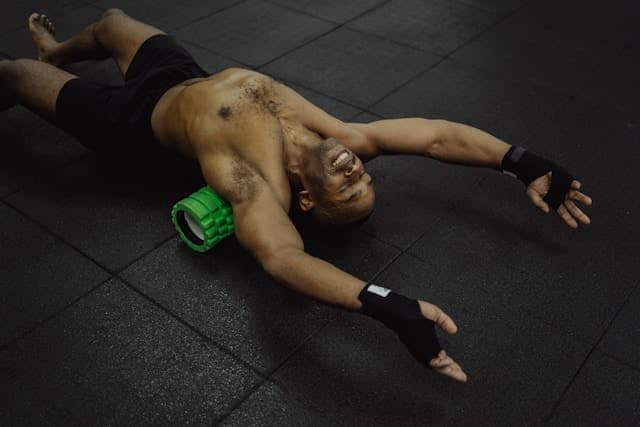
- How to Perform: Lie with the foam roller across your mid-back. Support your head with your hands and gently extend your upper back over the roller.
- Duration: 10–12 reps.
- Benefit: Improves thoracic spine mobility and posture.
12.) Foam Roller Thread the Needle
- How to Perform: Begin on all fours with the foam roller under one arm. Thread your arm under your chest, rolling the foam roller along your arm as you twist.
- Duration: 8–10 reps per side.
- Benefit: Improves spinal rotation and shoulder mobility.
13.) Quadriceps Windshield Wipers
- How to Perform: Lie face down with the foam roller under your quads. Rotate your legs side to side like windshield wipers.
- Duration: 8–10 reps per leg.
- Benefit: Releases tension in the quads while enhancing hip mobility.
14.) Thoracic Spine Snow Angels
- How to Perform: Lie on your back with the foam roller placed vertically along your spine, supporting your head and tailbone. Bend your knees and place your feet flat on the floor. Slowly move your arms in a wide arc, mimicking a “snow angel” motion, keeping them as close to the floor as possible without forcing the movement. Focus on controlled motion and deep breathing.
- Duration: Perform 8–10 slow and controlled reps.
- Benefit: Enhances thoracic spine mobility, opens the chest, and stretches the shoulders while relieving upper body tension.
15.) Kneeling Foam Roller Floor Slide
- How to Perform: Begin in a kneeling position with the foam roller placed horizontally on the floor in front of you. Rest your forearms on the foam roller with your elbows bent at a 90-degree angle. Slowly slide the foam roller forward, extending your arms while keeping your chest low to the floor. Focus on protracting and retracting your shoulder blades as you roll the foam roller back and forth.
- Duration: Perform 8–10 slow, controlled reps.
- Benefit: Enhances scapular mobility, strengthens the serratus anterior, and improves shoulder stability and control, making it especially useful for athletes and those with postural imbalances.
How to Choose the Right Foam Roller
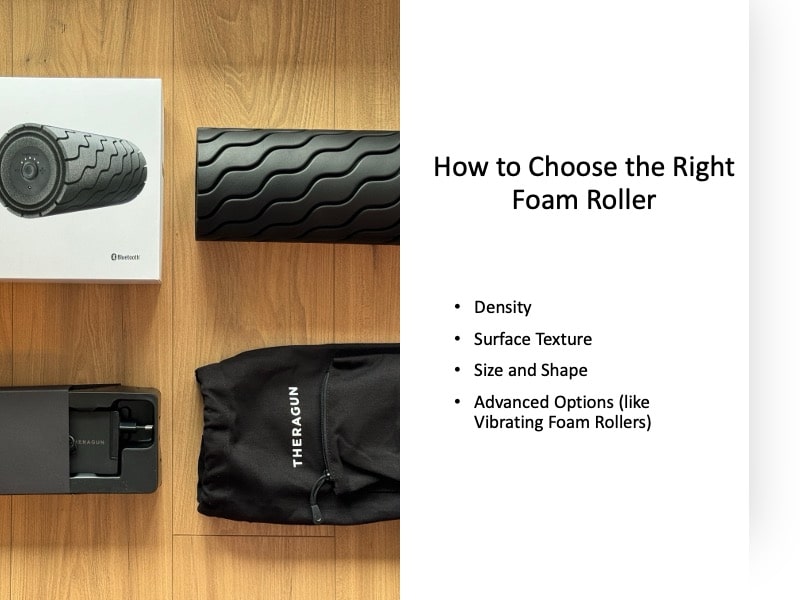
The foam roller you choose will influence the intensity and effectiveness of your exercises. Different types cater to varying levels of experience and target specific needs:
- Soft Foam Rollers: Best for beginners and sensitive muscles, offering gentle pressure for easing into foam rolling.
- Firm Rollers: Provide deeper pressure, ideal for experienced users who need more intense myofascial release.
- Textured Rollers: Target deep tissue with grooves and ridges designed for advanced relief of stubborn knots and trigger points.
- Vibrating Foam Rollers: Combine rolling with vibration therapy to enhance circulation, reduce muscle soreness, and promote faster recovery. They are particularly effective for deep tissue massage and stimulating tight or inactive muscles.
Selecting the right foam roller ensures a more effective and personalized recovery experience.
Last update on 2025-07-05 / This article includes affiliate links/Images via Amazon Product Advertising API. I may earn commissions on purchases made through these links.
This website does not provide medical advice. This website site does contain affiliate links, and purchases may earn a commission.
Read my Medical Disclaimer, Review Disclaimer, and Publishing Policies for more details. Use of this site indicates acceptance of these terms.
